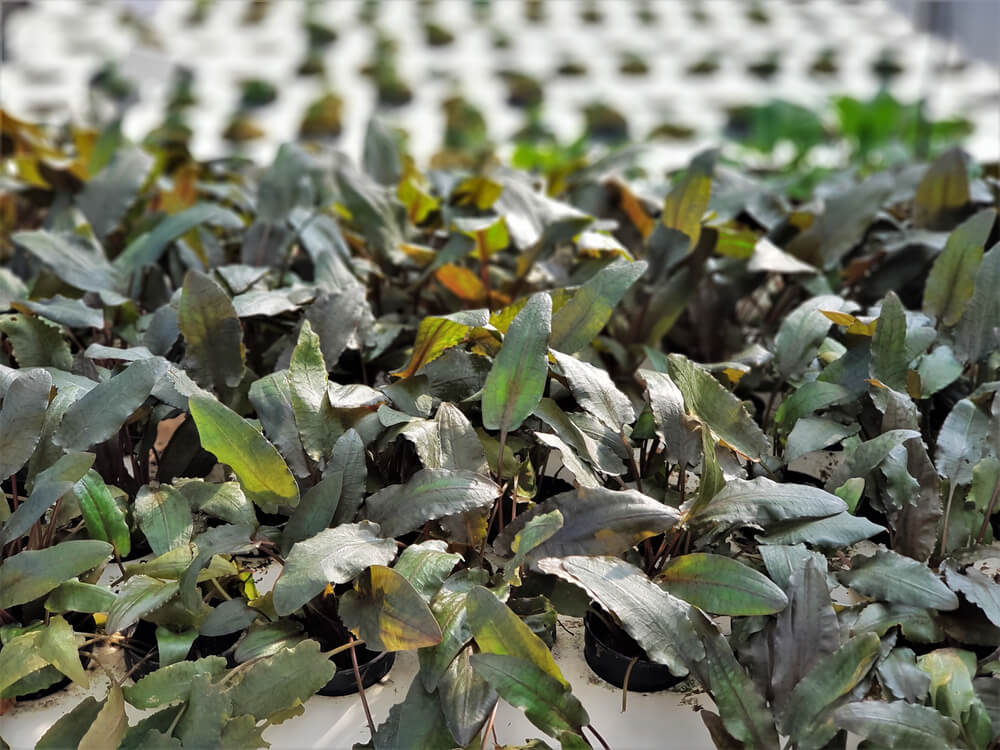Discover the truth behind Cryptocoryne Live Aquarium Plants and debunk common misconceptions surrounding these beautiful aquatic plants.
The Basics of Cryptocoryne Live Aquarium Plants

Cryptocoryne live aquarium plants, also known as Crypts, are popular choices among aquarium enthusiasts. These plants belong to the Araceae family and are native to regions in Asia and Australia. They are known for their vibrant green leaves and unique shapes, making them a visually appealing addition to any aquarium.
Crypts are relatively easy to care for, making them suitable for both beginner and experienced aquarists. They can thrive in a wide range of water parameters, including soft or hard water, as long as the conditions are stable. They can also tolerate low light conditions, making them suitable for aquariums with limited access to natural light.
One of the key features of Crypts is their ability to propagate through runners. These runners produce new plantlets that can be separated and planted elsewhere in the aquarium. This allows for easy propagation and the creation of lush, dense plant beds.
Overall, Cryptocoryne live aquarium plants are a great choice for aquarists looking to add a touch of greenery to their tanks. With proper care and maintenance, these plants can thrive and contribute to a healthy and visually appealing aquatic environment.
Misconception #1: Difficult to Maintain
One common misconception about Cryptocoryne live aquarium plants is that they are difficult to maintain. While it is true that some species of Crypts can be sensitive to changes in water parameters, many varieties are actually quite hardy and adaptable.
To ensure the successful maintenance of Crypts, it is important to provide them with stable water conditions. This includes maintaining proper temperature, pH, and lighting levels. Regular water changes and the use of liquid fertilizers can also help promote healthy growth and prevent nutrient deficiencies.
Additionally, it is important to avoid sudden changes in water parameters, as this can cause stress to the plants. Gradual acclimation to new conditions is recommended, especially when introducing Crypts to a new aquarium or when making adjustments to an existing setup.
By following these guidelines and providing the necessary care, Cryptocoryne live aquarium plants can thrive and add beauty to any aquatic environment.
Misconception #2: Incompatible with Other Fish or Plants
Another misconception about Cryptocoryne live aquarium plants is that they are incompatible with other fish or plants. While it is true that some fish species may nibble on the leaves of Crypts, there are many fish and invertebrates that can coexist peacefully with these plants.
When selecting tankmates for Crypts, it is important to consider their compatibility in terms of water parameters, behavior, and feeding habits. Many peaceful community fish, such as tetras, rasboras, and gouramis, can live harmoniously with Crypts. Invertebrates like snails and shrimp can also be great companions for these plants.
In terms of plant compatibility, Crypts can be combined with a variety of other aquatic plants to create a diverse and visually appealing aquascape. It is important to consider the growth requirements of different plants and arrange them accordingly to ensure they receive the necessary light and nutrients.
With proper planning and consideration, Cryptocoryne live aquarium plants can coexist with a wide range of fish and plants, creating a balanced and thriving ecosystem.
Misconception #3: Limited Variety and Availability
Many aquarium enthusiasts believe that there is a limited variety and availability of Cryptocoryne live aquarium plants. However, this is far from the truth. There are actually numerous species and cultivars of Crypts available in the hobby, each with its own unique characteristics and growth patterns.
Some popular species of Crypts include Cryptocoryne wendtii, Cryptocoryne spiralis, Cryptocoryne parva, and Cryptocoryne balansae. Each species has its own distinct leaf shape, size, and coloration, allowing for endless possibilities when it comes to aquascaping.
In addition to the wide variety of species, there are also many cultivars and hybrids of Crypts available. These plants have been selectively bred to exhibit certain traits, such as different leaf colors or patterns. This adds even more diversity to the options available to aquarists.
Cryptocoryne live aquarium plants can be found in local fish stores, online retailers, and through hobbyist groups and forums. With a little research and exploration, aquarists can discover a world of options when it comes to Cryptocoryne plants for their aquariums.
Correcting the Misconceptions: Tips for Successful Cryptocoryne Live Aquarium Plants
Now that we have debunked some common misconceptions about Cryptocoryne live aquarium plants, let's discuss some tips for ensuring their success in your aquarium.
1. Provide stable water conditions: Crypts prefer stable water parameters, including temperature, pH, and lighting. Avoid sudden changes in these parameters to prevent stress to the plants.
2. Use a nutrient-rich substrate: Crypts are heavy root feeders, so it is important to provide them with a nutrient-rich substrate. Use a high-quality aquarium soil or add root tabs to ensure they receive the necessary nutrients.
3. Supplement with liquid fertilizers: In addition to a nutrient-rich substrate, Crypts can benefit from the regular supplementation of liquid fertilizers. These fertilizers provide essential macro and micronutrients that may be lacking in the aquarium water.
4. Avoid overcrowding: Crypts appreciate some space to spread their roots and grow. Avoid overcrowding the aquarium to allow the plants to develop fully and prevent competition for resources.
5. Prune and trim regularly: As Crypts grow, they may require pruning and trimming to maintain their desired shape and prevent overcrowding. Use clean, sharp tools to trim away any dead or decaying leaves and promote healthy growth.
By following these tips and providing the necessary care, you can enjoy the beauty of Cryptocoryne live aquarium plants in your own tank.
Conclusion
Cryptocoryne live aquarium plants are not as challenging or limited as they may seem. By understanding their basic care requirements and debunking common misconceptions, aquarists can confidently incorporate these beautiful plants into their aquariums.
With their vibrant green leaves, unique shapes, and ability to propagate, Crypts can add a touch of natural beauty to any aquatic environment. By providing stable water conditions, selecting compatible tankmates, and exploring the wide variety of species and cultivars available, aquarists can create stunning aquascapes that showcase the true potential of Cryptocoryne live aquarium plants.
So, don't be discouraged by the misconceptions. Dive into the world of Crypts and unlock the beauty and benefits they have to offer!





Leave a Comment